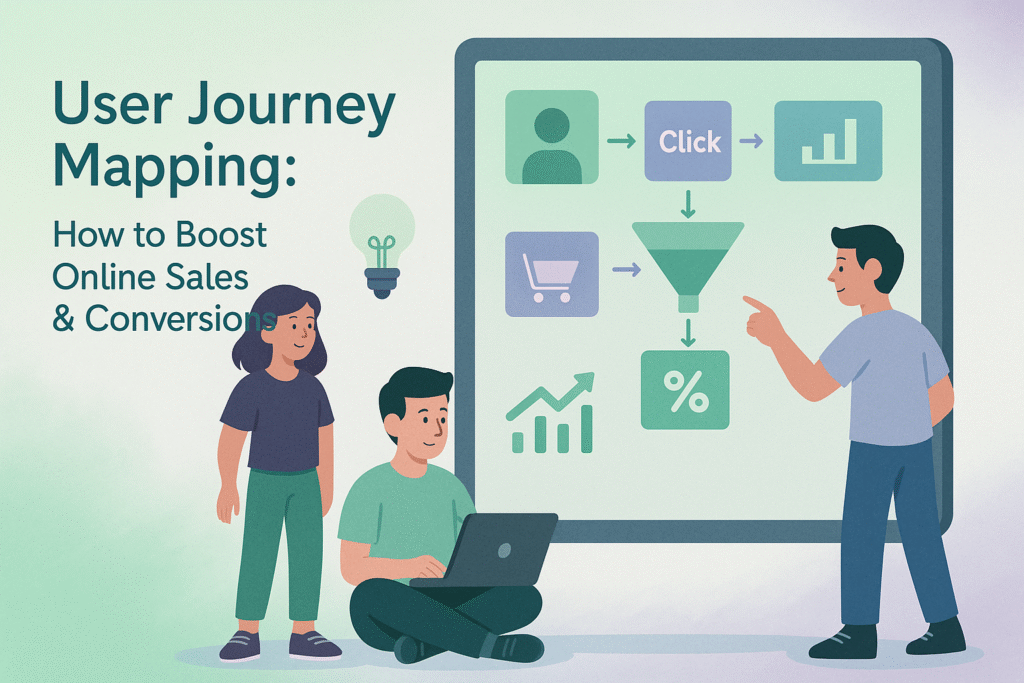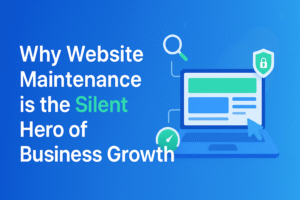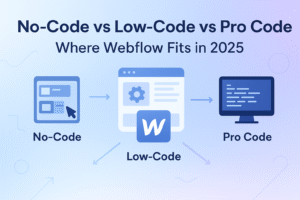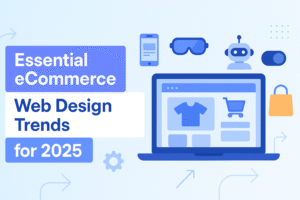Understanding how your customers think, feel, and behave at every stage of interaction with your brand is essential to growing your business. That’s where User Journey Mapping plays a powerful role. It helps you visualize the entire user journey, from initial contact to final purchase, providing insights into how to remove friction, increase engagement, and drive more conversions.
Whether you’re an eCommerce store owner, a digital marketer, or a website designer, creating a strategic and personalized customer journey can dramatically improve the performance of your sales funnel. A well-designed user journey doesn’t just guide your customers, it encourages them to take meaningful actions that ultimately boost online sales and maximize website conversion rates.
In this complete guide, we’ll break down how to create user journey mapping step by step. You’ll discover the real benefits, proven strategies, and actionable tips to help you turn casual visitors into loyal customers, all through the power of journey mapping.
What Is a User Journey?
A user journey is the complete path a customer takes from discovering your business to completing a desired action, such as making a purchase, signing up for a newsletter, or filling out a contact form. It includes every interaction they have with your website, brand, and marketing channels along the way.
The user journey typically involves multiple stages: awareness, consideration, decision, and post-purchase. Each stage reflects the customer’s mindset and needs at that moment, making it essential to provide the right content, design, and functionality to guide them forward.
By understanding the user journey, businesses can uncover pain points, optimize touchpoints, and create seamless experiences that lead to higher website conversions and ultimately boost online sales.
Each user journey is unique, but commonly follows stages like:
- Awareness
- Consideration
- Purchase
- Retention
- Advocacy
🗺️ What is User Journey Mapping?
User Journey Mapping is a strategic process that visualizes the steps a customer takes when interacting with your brand, from their first touchpoint to the final conversion, and beyond. It’s not just a diagram, but a powerful tool that reveals your customer’s thoughts, emotions, pain points, and motivations at every stage of their interaction with your business.
At its core, user journey mapping answers key questions like:
- What problems are customers trying to solve?
- How do they discover your products?
- What are the barriers to purchase?
- How do they feel during different stages of their experience?
By visualizing this process, businesses can make more informed decisions that lead to UX design to improve conversions, eliminate friction, and deliver a seamless path to purchase. When done right, it becomes a guide to mapping user journey for sales success, directly supporting your goals to boost online sales and improve your website conversion rate.
Whether you’re a digital marketer, designer, or eCommerce store owner, understanding the steps to build a customer journey map is essential for creating a user-centered website that converts visitors into loyal buyers. It’s a critical piece of customer journey optimization for eCommerce, helping you tailor experiences that delight users and drive measurable business growth.
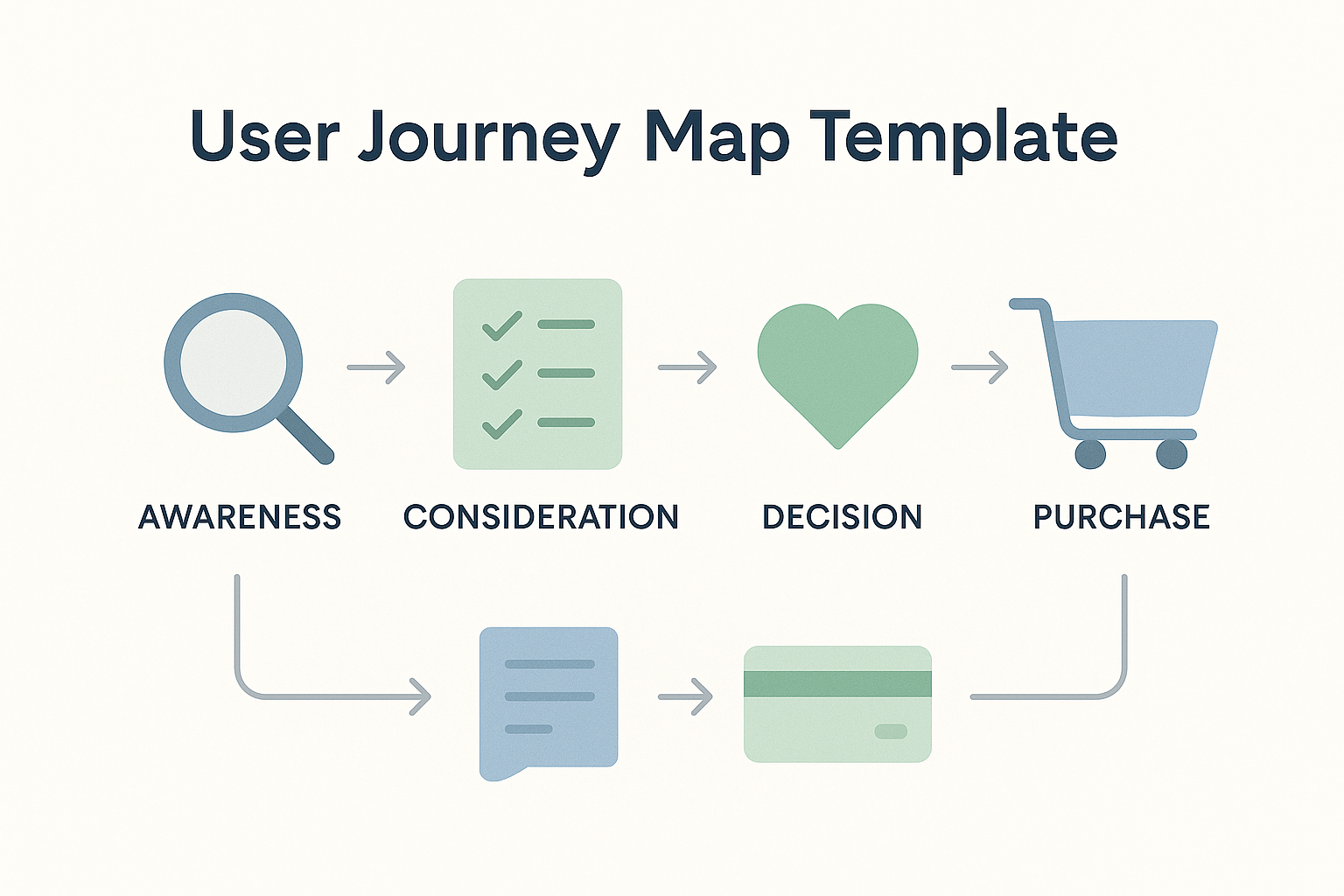
🌟 Benefits of User Journey Mapping
User Journey Mapping is more than a visual diagram — it’s a powerful tool to transform your online business. Here’s why it matters:
✅ Identify friction points that hurt conversions
✅ Understand customer behavior more deeply
✅ Optimize your UX design to improve conversions
✅ Align marketing and sales goals with actual user behavior
✅ Build better email or ad funnels based on the real journey
✅ Enhance customer experience at every stage
When done right, customer journey optimization for ecommerce directly leads to improved website sales and long-term loyalty.
🛠️ Step-by-Step Guide on How to Create User Journey Mapping
Creating a detailed user journey map helps you visualize your customer’s path and improve every interaction that leads to a sale. Whether you’re running an eCommerce store or a service-based website, following a structured process ensures you identify critical touchpoints and opportunities to boost conversions.
Here’s a complete guide to mapping user journey for sales, including practical steps you can follow:
1️⃣ Define Clear Business Goals
Start by aligning your user journey mapping with your business objectives. Are you aiming to boost online sales, increase sign-ups, reduce cart abandonment, or improve lead quality? Having clarity on your goals helps you stay focused during the mapping process and measure success.
Example: If your goal is to improve website sales with user journey insights, your map should highlight decision-making stages that affect purchase behavior.
2️⃣ Create Customer Personas
Understand who your customers are. Use data and insights to build realistic personas based on demographics, buying behavior, motivations, pain points, and expectations. This ensures your customer journey optimization for eCommerce is tailored to real people, not assumptions.
Tip: Use surveys, analytics, and CRM data to build 2-3 core personas.
3️⃣ Identify All Touchpoints
List every interaction a user may have with your brand—from ads, emails, and social media, to your product pages, checkout flow, and post-purchase communication. Mapping these touchpoints gives you a clearer picture of the user journey for increasing sales.
Bonus: Look for friction points like slow-loading pages, confusing navigation, or missing CTAs that may hurt website conversion rates.
4️⃣ Outline the Customer Journey Stages
Break the journey down into key stages. A typical sales funnel includes:
- Awareness (the user first hears about you)
- Consideration (they explore your offerings)
- Decision (they’re ready to buy)
- Retention (they return or stay engaged)
Mapping user actions, emotions, and needs at each stage helps you deliver the right content, support, and design elements to guide users forward.
5️⃣ Analyze Emotions & Pain Points
Understand how customers feel at each step. Are they confused, excited, frustrated, or ready to buy? Emotion tracking helps you craft a better UX design to improve conversions, especially when combined with data like bounce rates or support queries.
Action: Add emotion indicators (smileys or notes) to your journey map to spot key pain points.
6️⃣ Align Internal Teams & Tools
Collaboration between marketing, design, customer support, and sales is crucial. Ensure all teams understand the steps to build a customer journey map and contribute their insights. This creates a more holistic experience and ensures consistency across channels.
Tool suggestion: Use journey mapping software like Lucidchart, Miro, or Figma to collaborate visually.
7️⃣ Optimize & Iterate Based on Data
Once your map is live, test and refine it regularly. Use tools like Google Analytics, Hotjar, or user feedback to see how people interact and where they drop off. This is where customer journey optimization for ecommerce truly delivers long-term results.
Reminder: A journey map is not static—it evolves with your customers and business strategy.
By following this comprehensive guide, you’ll build a powerful user journey map that aligns with your sales funnel, enhances customer experience, and directly contributes to boosting online sales and website conversions.
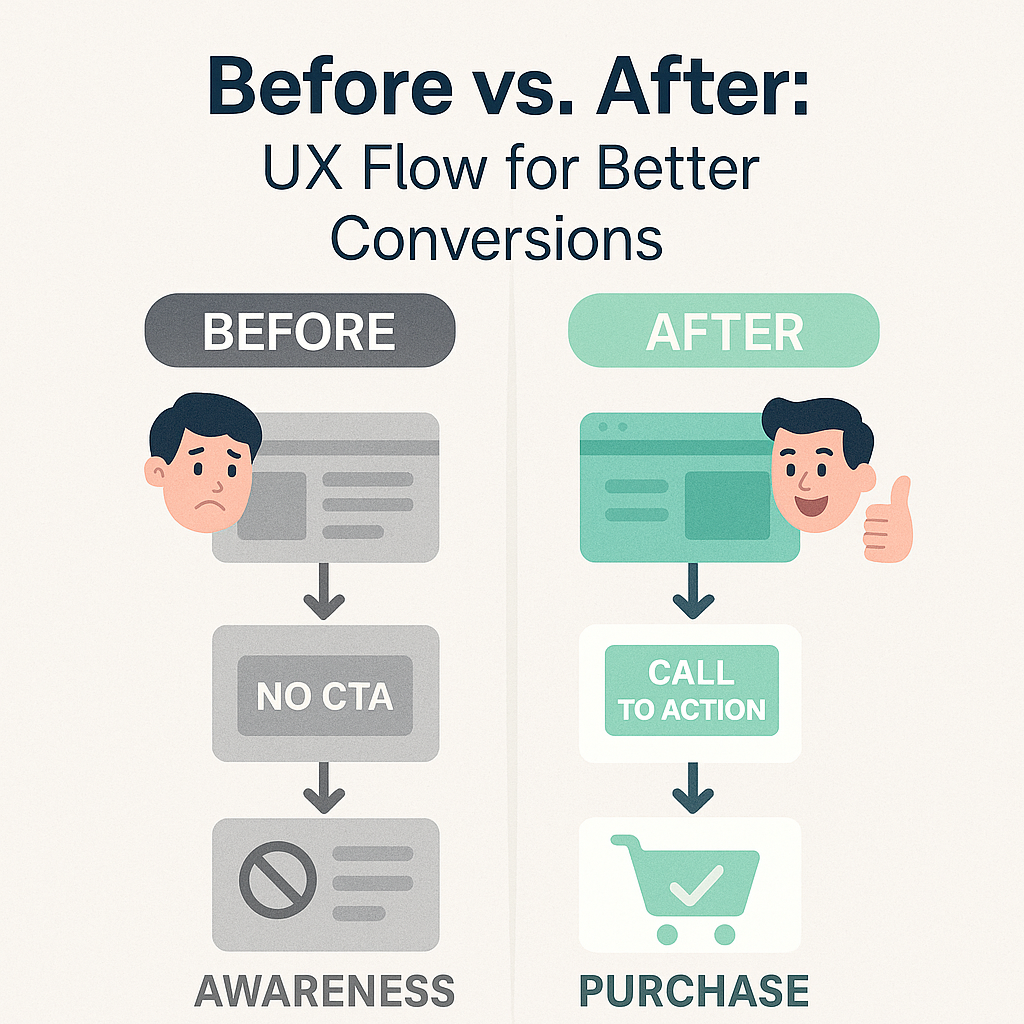
🧠 Tips to Boost Online Sales and Website Conversion Using Journey Mapping
Once you’ve mapped the user journey, the next crucial step is to translate that insight into tangible improvements. Here’s how you can do that effectively:
1. Refine Your Landing Pages
- Align your landing pages with specific stages of the user journey.
- Use clear headlines, relevant messaging, and strong CTAs based on where users are in their buying process.
- A/B test variations to see which design or copy converts best.
2. Leverage Personalization
- Use journey insights to deliver personalized product recommendations.
- Tailor email campaigns, on-site messages, and retargeting ads to match the user’s position in the journey.
- Personalized experiences can significantly increase engagement and improve website sales with user journey insights.
3. Optimize for Mobile and UX
- A smooth mobile experience is essential—many journeys now begin on smartphones.
- Apply UX design to improve conversions by simplifying navigation, minimizing load times, and using intuitive layouts.
4. Use Exit-Intent Popups Intelligently
- If your map shows drop-offs before checkout, use exit-intent offers to capture potential lost sales.
- Offer discounts, free shipping, or assistance before users abandon your site.
5. Provide Support at Critical Touchpoints
- Use live chat or chatbots on product pages, cart, and checkout to answer questions and reduce hesitation.
- Well-timed support can eliminate friction and move users forward in the conversion funnel.
6. Reduce Friction at Checkout
- Simplify forms and payment processes.
- Allow guest checkout and offer multiple payment options.
- Journey mapping often reveals that complicated checkout is a common dropout point.
7. Create Content That Moves Users Forward
- Provide valuable blog posts, videos, and guides that address pain points at every stage.
- A guide to mapping user journey for sales can even become a lead magnet for your brand.
8. Track and Improve Continuously
- Regularly analyze behavior analytics, heatmaps, and conversion funnels.
- Revisit your customer journey optimization for eCommerce periodically to align with changing buyer behavior.
By implementing these journey-based optimizations, you’ll not only create a seamless experience but also boost online sales and achieve higher website conversion rates.
🚀 Additional Strategies for Customer Journey Optimization
- Integrate chatbot support during key drop-off points
- Use A/B testing to fine-tune CTAs and landing pages
- Create content tailored to each stage of the customer journey
- Offer loyalty perks for post-purchase engagement
These ongoing improvements to your customer journey optimization for ecommerce can significantly increase conversions over time.
🧩 Conclusion: Map It to Make It
Crafting a thoughtful customer journey map isn’t just a design exercise — it’s a powerful strategy to understand how users interact with your brand and what drives them to buy. By visualizing each stage of their journey, you can uncover hidden friction points, optimize the buying process, and create tailored experiences that improve website sales with user journey insights.
Whether you’re looking to boost conversions, build long-term loyalty, or just better connect with your audience, journey mapping is your secret weapon. It’s time to stop guessing and start guiding — because when you map it, you make it.
📣 Ready to Improve Website Sales with User Journey?
Let our UX experts help you map, optimize, and convert. Contact us today and take the first step toward smarter, more profitable user experiences!
❓ FAQs
1. What is the difference between a user journey and a sales funnel?
A user journey includes every experience a customer has with your brand, while a sales funnel focuses specifically on the path to purchase.
2. What is the difference between a user journey and a sales funnel?
A user journey includes every experience a customer has with your brand, while a sales funnel focuses specifically on the path to purchase.
3. How often should I update my customer journey map?
Every 6–12 months or when you launch a new product, redesign your website, or notice a dip in conversions.
4. Can user journey mapping help small businesses?
Absolutely! Even simple maps can reveal powerful insights for boosting online sales on a tight budget.
5. What tools can help with user journey mapping?
Try Miro, Lucidchart, Figma, or even Google Analytics to visualize journeys and analyze behavior.
6. Does UX design really impact website conversion?
Yes! Clear navigation, fast loading, and intuitive layouts are key elements in UX design to improve conversions.




